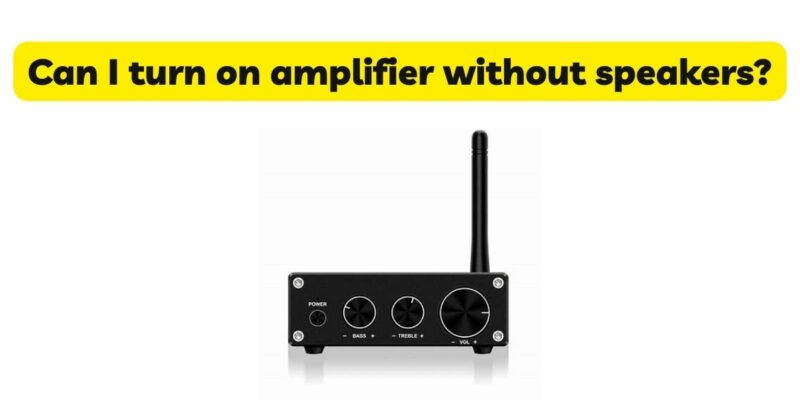Amplifiers play a crucial role in audio systems, powering and amplifying the audio signal to drive speakers. However, there may be instances where you want to turn on an amplifier without connecting any speakers. Whether it’s for testing purposes, troubleshooting, or other reasons, it’s important to understand the implications and considerations of operating an amplifier without speakers. This article aims to explore the topic in detail, providing insights into the potential effects and best practices for operating an amplifier without speakers.
I. Understanding Amplifier Functionality:
- Amplification Process: Amplifiers receive an audio signal from a source, such as a CD player or a digital audio player, and increase its power to drive speakers. The primary function of an amplifier is to boost the signal to a level suitable for the speakers to produce sound.
- Impedance Matching: Amplifiers are designed to work with specific speaker impedances. Impedance matching ensures that the amplifier and speakers are properly matched to achieve optimal performance and prevent damage to both components.
II. Operating an Amplifier Without Speakers:
- Potential Effects on the Amplifier:
a. Output Stage Stability: Amplifiers are designed to operate under specific load conditions, which includes the connected speakers. Operating an amplifier without speakers can cause instability in the output stage, potentially leading to distortions or other performance issues.
b. Voltage Fluctuations: The absence of speakers can cause voltage fluctuations in the amplifier’s output stage. These fluctuations can affect the amplifier’s performance and may result in excessive heat generation or even damage to internal components.
c. Protection Circuitry: Many amplifiers incorporate protection circuitry to safeguard against potential issues, such as short circuits or excessive heat. However, the absence of speakers may prevent these protection mechanisms from functioning optimally, potentially increasing the risk of damage to the amplifier.
- Considerations for Operating an Amplifier Without Speakers:
a. Testing and Troubleshooting: Operating an amplifier without speakers can be useful for testing purposes, such as checking signal flow, analyzing noise levels, or troubleshooting potential issues within the amplifier itself. However, it’s crucial to exercise caution and avoid extended periods of operation without speakers.
b. Low-Volume Playback: Some amplifiers offer a “headphone” or “direct” mode, allowing for direct connection of headphones without speakers. In such cases, the amplifier is specifically designed to handle headphone loads, ensuring proper performance and audio quality.
c. Impedance Considerations: When operating an amplifier without speakers, it’s important to ensure that the amplifier is not operating into an open or infinite load. This can potentially cause instability or damage to the amplifier. If no speakers are connected, it’s advisable to use a dummy load or termination plug specifically designed for this purpose.
III. Best Practices for Operating an Amplifier Without Speakers:
- Limited Duration: If you need to operate the amplifier without speakers, it’s recommended to do so for short durations only, such as for testing or troubleshooting purposes. Extended periods of operation without speakers should be avoided to minimize potential risks to the amplifier.
- Load Simulation: To maintain stability and prevent voltage fluctuations, consider using a load simulation device or termination plug specifically designed to simulate the load of connected speakers. These devices provide a safe and stable load for the amplifier, allowing it to operate within its intended specifications.
- Monitoring: When operating an amplifier without speakers, it’s crucial to monitor the amplifier’s temperature, performance, and any signs of instability. If you notice abnormal behavior, such as excessive heat or distorted sound, it’s advisable to power off the amplifier and reassess the setup.
- Manufacturer Guidelines: Refer to the amplifier’s user manual or consult the manufacturer’s guidelines for any specific recommendations or limitations regarding operating the amplifier without speakers. Manufacturers may provide specific instructions or precautions based on the amplifier’s design and capabilities.
IV. Conclusion:
Operating an amplifier without speakers can be done for specific purposes such as testing or troubleshooting. However, it’s important to understand the potential effects on the amplifier’s stability, voltage fluctuations, and protection mechanisms. By adhering to best practices such as using load simulation devices, limiting the duration of operation, and monitoring the amplifier’s performance, you can mitigate potential risks and ensure the amplifier operates within its intended specifications. Always refer to the manufacturer’s guidelines for specific recommendations and limitations regarding operating an amplifier without speakers.


